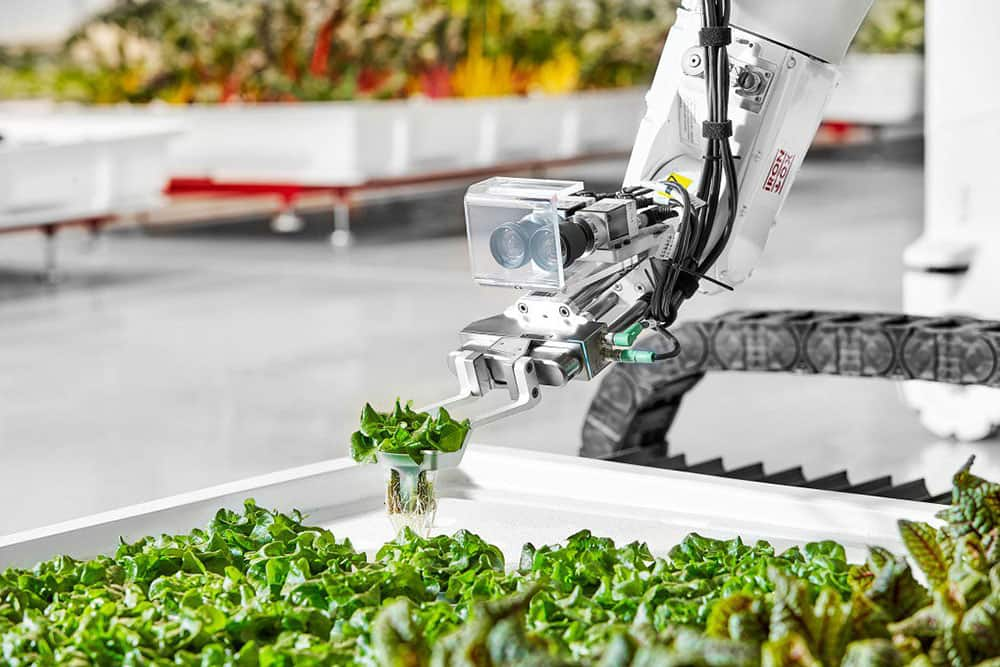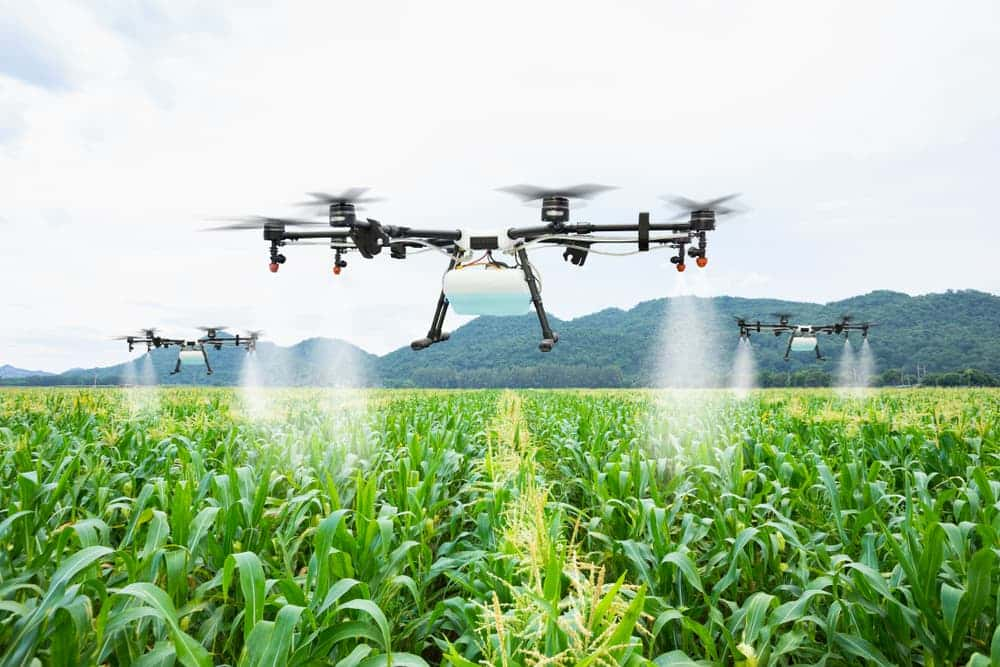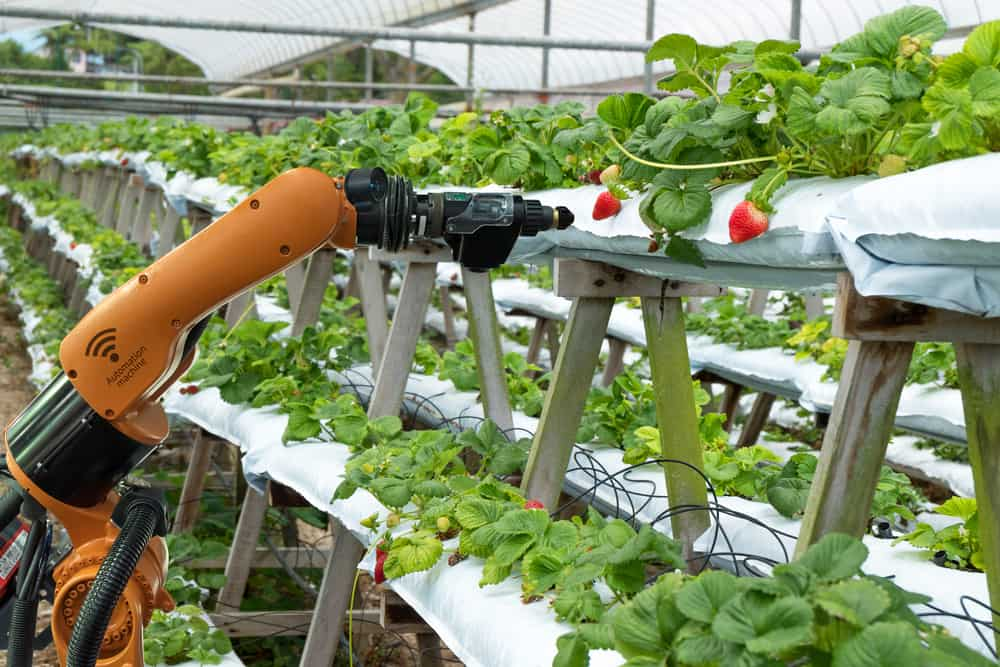Agriculture plays an important role in the economic sector of every country. Artificial Intelligence applications has become one of the most importance in every sector, including education, banking, robotics, agriculture, etc. The population around the world is increasing day by day and so is the demand for food. The traditional methods used by farmers are not enough to meet the needs at the current level. Therefore, some new training methods are introduced to meet this need and to provide great employment opportunities to many people in this sector. In the agricultural sector, it played a very important role, and it changed the agricultural industry. AI saves the agricultural sector from various factors such as climate change, population growth, labor issues in this field and food security. Various hi-tech computer-based systems are designed to determine various important parameters like weed availability, fruit availability, seed quality and many more. In this topic, we will discuss the impact and application of Artificial Intelligence on Agriculture. 
- Challenges in Agriculture using traditional methods
Before understanding the role and application of AI in Agriculture, we must understand what are the challenges in agriculture using traditional methods, which are given below:
- In agriculture, various weather factors such as rainfall, temperature, and humidity play an important role. Due to pollution, sometimes the weather will change dramatically, so it is difficult for farmers to make the right decisions to harvest, plant crops, and prepare soil.
- For the best crops, the soil should be fertile and contain useful elements, such as Nitrogen, Phosphorus, and Potassium. If these nutrients are not available in an effective way in the soil, then it can cause poor quality seeds. But it is difficult to recognize the quality of this land in traditional ways.
- In the process of agricultural life, we have to save crops from weeds. However, it can increase production costs, and it also drains nutrients from the soil. But with traditional methods, identification and prevention of plants from weeds is not good.
 For agriculture, Artificial Intelligence has become a revolutionary technology. It helps farmers by producing healthier crops, pest control, soil maintenance, and many other ways. Here are some of the main applications of Artificial Intelligence in the agricultural sector:
For agriculture, Artificial Intelligence has become a revolutionary technology. It helps farmers by producing healthier crops, pest control, soil maintenance, and many other ways. Here are some of the main applications of Artificial Intelligence in the agricultural sector:
- Weather & Price Forecast: As discussed in the challenge that it is difficult for farmers to make the right decision to harvest, plant seeds, and prepare soil due to climate change. But with the help of AI weather forecasting, farmers can get information about weather analysis, and thus, they can plan for what kind of crops to grow, crops to sow and harvest crops. With price forecasting, farmers can have a better idea of crop prices for the next few weeks, which can help them get maximum profit.
- Plant Health Care:
The quality of the seed depends on the type of soil and soil nutrients. But with the increasing rate of deforestation, the quality of land is deteriorating day by day, and it is difficult to determine. To solve this problem, AI has come up with a new tool called Plantix. It was developed by PEAT to identify deficiencies in the soil, including pests and plant diseases. With the help of this application, farmers can get tips to use the best fertilizers that can improve the quality of the harvest.  In this application, AI image recognition technology is used through which farmers can take pictures of crops and get information about quality.
In this application, AI image recognition technology is used through which farmers can take pictures of crops and get information about quality.
- Agricultural Robotics:
Robots are widely used in many sectors, especially in manufacturing, to perform complex tasks. Now, various AI companies are developing robots for use in the agricultural sector. These AI robots are developed in such a way that they can perform various tasks in agriculture. AI robots are also trained in assessing crop quality, detecting and controlling weeds, and harvesting crops at a faster rate than humans.
- Smart Spraying
With the AI sensor, weeds can be easily detected, and it also detects areas affected by weeds. When you find such areas, herbicides can be perfectly suited to reduce the use of herbicides and also save time and crops. The use of AI sprayers can greatly reduce the number of chemicals to be used in the field, thus improving the quality of the crop and saving money. 
- Sickness Disease
With AI prediction, farmers can easily get knowledge about diseases. With this, they can diagnose the disease easily with proper procedure and time. It can save the life of the plant and the time of the farmer. To do this, first of all, plant images are pre-processed using computer vision technology. This ensures that the plant image is correctly divided into infected and non-infected parts.
- Precision Agriculture
Precision farming is about "Right Place, Right Time and Right Product". Conventional farming techniques are a precise and controlled method that can replace labor intensive parts of agriculture to perform repetitive tasks. An example of Supply farming is identifying stress levels in crops. This can be obtained by using high-resolution images and different sensor data on crops. The data collected from the sensors is then fed to a machine learning model as input for problem identification.
- Aerial survey and photography
AI can analyze images from drones and satellites to help farmers monitor crops and livestock. That way they can be notified immediately if something is wrong without having to constantly keep an eye on the farm itself. Aerial photography is also useful for improving the accuracy and efficiency of pesticide application and also by making sure that pesticides only go where they are intended for. 
- Carry out evaluations and deductions
Just as they can detect defects, diseases and pests as plants grow, image algorithms can also be used to sort "good" fruits from damaged or ugly ones. By examining fruits and vegetables for size, shape, color and volume, computer vision can automate the selection and sorting process with much greater accuracy and speed than trained professionals.
